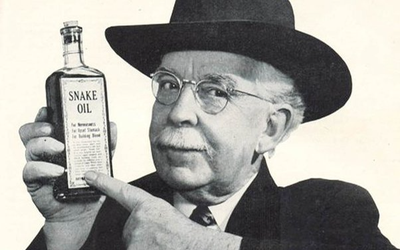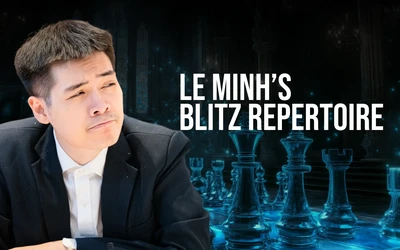
Bortnyk's Blitz Repertoire
How to get non-standard tricky opening positions?Learn to get non-standard opening positions full of traps like one of the trickiest players, Olexandr Bortnyk.
In this article, I examine Bortnyk's opening Repertoire that he used in 2023-2024 in Blitz and Bullet games. I used only public information that anybody can find on the website https://www.openingtree.com/
If you enjoy his concept, try it out. If your opponent doesn't know the theory, you may gain a pretty serious advantage and great attacking chances!
Concept
Olexandr Bortnyk currently has the 10th spot on a FIDE blitz rating list with 2749 and is well known for his excellent results in Jobava London and Alekhine, where he is considered to be one of the best experts in the world alongside Daniel Naroditsky. They even created a course together on Jobava London (I haven't looked at it myself, but considering their experience, I can assume it's pretty good). Against d4, Olexandr often plays the double fianchetto systems. Also, it's worth mentioning that besides the mentioned repertoire, Bortnyk plays quite often 1.e4 with white and 1...d6 with black - which gives a potential for a second part of this article at some point.
Black: Alekhine + Nf6&b6 systems, which often transposes to double fianchetto
White: Jobava London in an ultra-aggressive style
The logic of the concept:
1. Opening lines must have many traps or easy development
2. The purpose is often to win the game super quickly, which is helpful in Arena format
3. The lines are pretty solid and not messy, with very few basic patterns
White Jobava London (1.d4 2.Nc3 3.Bf4)
Against the c5 system, Bortnyk goes for the 3.e4 line which seems to give black a lot of headaches due to its forced nature. Both Naroditsky and Bortnyk have a lot of success in this line. I often play the c5 line myself, and my results are significantly better if white plays 4.e3 (where the choice for black is very comfortable) than in the case of 4.e4.
In the case of the Bf5 concept, the white's idea is to hunt this bishop with Ne5-g4-h4. If black selects precise move orders, getting much from attacking the bishop is not possible; usually, in this case, white plays Bd3 and gets a balanced position with still some attacking prospects on the Kingside thanks to the control of the e5 square
If blacks fianchetto the bishop, then Bortnyk goes for the h4-h5 ideas. It is worth mentioning that he doesn't go for the Nb5 ideas (forcing Na6) but rather plays the less popular Ne5-Bb5 line, where black needs to know more theory to get out of the opening. Obviously, if black allows the h4-h5 with an exchange sacrifice, Bortnyk always does it.
Against e6, Olexandr goes for the Nb5, forcing the knight on a6, and then plays standard moves Nf3-Ne5 that prepare an attack on the kingside. If black stops Nb5 and plays a6 first, then Bortnyk goes for the rare e3-a3 move order where white prepares facing b5 with b4!? This idea is pretty rare and can be surprising for black to face. The main point of the line is to prevent c5.
In the case of the Sidelines, the placement of the white pieces is similar except for the Indian (c5) lines, where there is not much sense in placing the bishop on f4. Against this concept, Bortnyk plays a rare but very aggressive line f4-e5 with the idea to castle QueenSide and use the 'h' pawn to get to the black king as quickly as possible. Stockfish is not a big fan of this line; however, Olexandr gets great results using this approach.
In the case of Pirc, Bortnyk still uses the Jobava London setup. It can potentially give white a worse position if black delays castle because white doesn't get good targets; however, in a majority of games, black indeed castle pretty quickly and either allows h4-h5 or a creative Ng5-Bc4-Qd3 idea where white targets the f7 and g6 pawn.
If black invite into the French (which is rarely played), Bortnyk often declines an invitation. It has some drawbacks; however, they are not significant and still give white a playable position, even though it is not that ambitious. Also, it is worth reminding that 1.e4 is also a part of Bortnyk's repertoire, and French is not a big problem for him. But it can be one for you if you don't play 1.e4. I recommend accepting an invitation and playing French, rather than being super committed to playing 3.Bf4 against everything.
Black: Alekhine (1.e4 Nf6)
Against the most aggressive Four-Pawn line, Bortnyk plays an interesting system where black goes for an early Bb4-c5 break. This line has many traps along the way, and white players barely score anything against Olexander. If they remember all the theory, though, black likely gets a losing position. I believe that it is an excellent line for blitz; however, you need to have some alternative in mind if your opponent knows the theory well.
Against the Solid Nf3 system, the reaction is pretty standard with dxe5 and solid play. It is worth mentioning that Olexandr doesn't play the g6 lines, which may cause some problems (for example, in Bd3 lines where it is difficult to develop the bishop). I would recommend being more flexible and sometimes transitioning into the g6 setup. Also, I found a cool tactical idea that Bortnyk hasn't played yet 12...Nh5!
In the case of e5xd6, Bortnyk always captures with an 'e' pawn. Even though the position is symmetrical, it doesn't mean it is drawish. Black can target the d4-c4 pawns or push d5 and then maneuver the knights to put serious pressure on the d4 pawn.
Against Sidelines, Bortnyk typically plays the engine recommendations. Interestingly, there are an enormous number of games in 2.Nc3. I suppose that people are so tired of playing against Olexandr's Alekhine that they even start declining the invitation on the second move. Black has to be careful with 2.Nc3 and know how to play the 2...d5 line without transitioning into French, which is possible, and Bortnyk does it.
Black: Double Fianchetto (1...Nf6 2...b6)
Against g3 systems, the double fianchetto gives black a pretty good position. It looks similar to Queen's Indian with all these Ne4 ideas, but the double fianchetto version seems more ambitious for black. The opening can also lead to KID-alike positions if white pushes forward the 'd' pawn, where black may often play e5, closing the center.
In the case of d4-c4 setups, Bortnyk still plays the double fianchetto. For me, black's position looks really terrible and I wouldn't recommend playing it. However, I think it is possible to make it half-correct by pushing the 'd5' early. Nevertheless, Bortnyk doesn't play it, probably because it is not conceptual and leads to different positions that may look similar to QGD.
Against London, Bortnyk plays the same concept as Jospem, where black tries to attack quickly on the King's Side, and I have some suggestions on improving the black concept there. In the case of Jobava the choice is 3...a6 - the system that likely gives black the most winning chances and leads to an unbalanced position. In other cases, Bortnyk often combines the double fianchetto and d6-e5 setups.
The only move that prevents the Nf6&b6 setup is 1.g3. Against this move order, Olexander often transitions to another pet line, the Bf5 KID. In this system, white can obviously make a draw by a perpetual, so if you want to play KID more aggressively, check my article on Naroditsky's repertoire.
Bonus! What to do against Bortnyk?
When you are surprised, playing against these lines is not easy. However, there is a reason why you don't see such lines in classical tournaments that often. And the reason is preparation. Even though refuting the Jobava London is impossible, you can get comfortable playable positions without much risk. Regarding the Alekhine or Nf6-b6, black faces the task of not getting crushed quickly. For example, in Alekhine black likely wants to change systems pretty often, especially in Four Pawns. And if you know all of them well - black is in big trouble! I also added some lines that I think give the best positions for white in the case of Nf6-b6.
I think it makes sense for white to play the principal lines and try to get a winning position after the opening. Obviously, some memorization will be required, but I think it is worth it. Against the Alekhine, the most challenging line for black is Four Pawns, and against Nf6-b6, white has d4-c4-Qc2, where black gets a sad version of KID.
For black, I added the 3...e6 4.Nb5 Na6 line, which is rock-solid and doesn't give white that many attacking chances. Against this line, Bortnyk often plays 7.Ne5, but the line can cause some headaches for white as well, and black can try to play for an opening advantage as well
I expect that Olexandr will continue playing Alekhine and Jobava for a very long time; however, I sense that he will change the Nf6-b6 system at some point and is still searching for something that would fit him very well. I'm very curious about what the next line is going to be.
- I offer coaching for players of all levels. Contact me if you want to improve your game and build an exciting and reliable repertoire. https://lichess.org/coach/Gordima
GM Gordievsky Dmitry
You may also like
 CM HGabor
CM HGaborHow titled players lie to you
This post is a word of warning for the average club player. As the chess world is becoming increasin… GM Gordima
GM GordimaNaroditsky's Blitz Repertoire
How to get a MESS if you are a great tactical player? GM Gordima
GM GordimaLe Minh's Blitz Repertoire
Build a repertoire based on one of the most hated openings in chess! GM Gordima
GM GordimaJospem's Blitz Repertoire
How to get solid practical positions all the time? GM NoelStuder
GM NoelStuderHow much chess improvement is possible?
I get asked all the time a question along the lines of: "I'm 45 years old, started 3 years ago, now … GM Gordima
GM Gordima